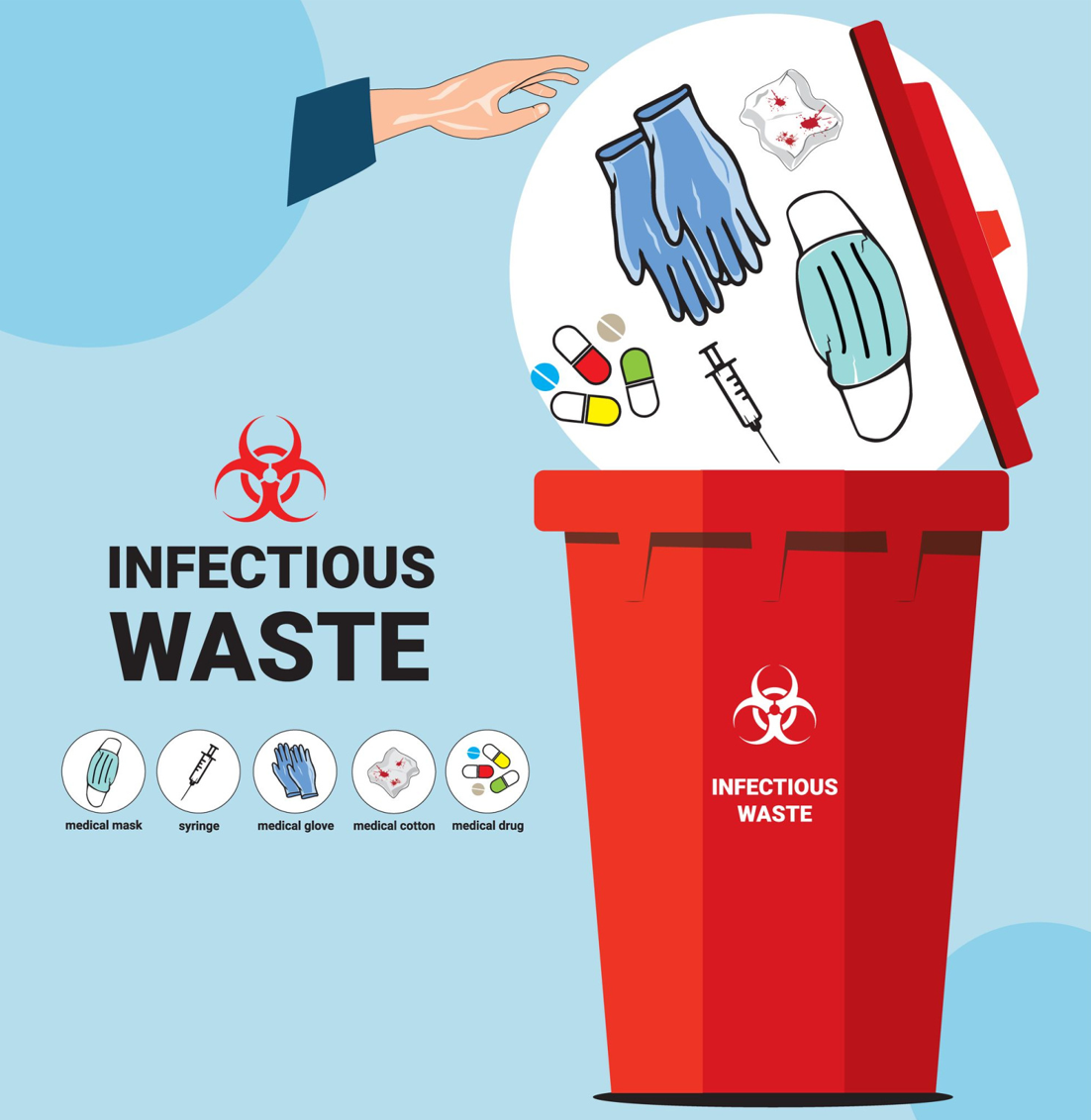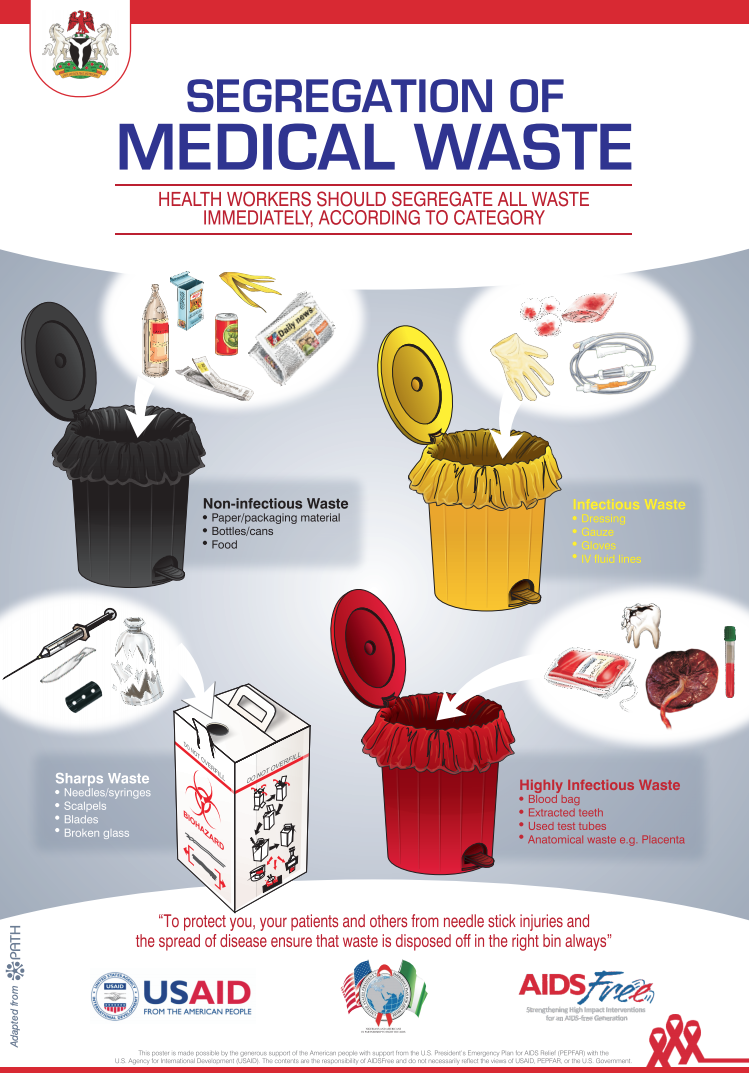Ideal Practices for Medical Waste Administration
Clinical waste administration is an important aspect of medical care facilities' procedures to guarantee the safety and security of patients, personnel, and the setting. Applying best techniques in medical waste administration is vital to decrease the dangers associated with unsafe waste. This consists of appropriate segregation and categorization of waste, ensuring its risk-free storage and labeling, sticking to regulative guidelines, and making use of efficient disposal approaches. By following these best techniques, healthcare facilities can decrease the potential for infections, injuries, and air pollution triggered by inappropriate handling and disposal of medical waste. This introduction aims to offer a summary of the value of finest techniques for medical waste monitoring and the subsequent sections will certainly explore each method thoroughly.
Segregation and Classification
In the field of clinical waste administration, proper partition and categorization are essential methods for guaranteeing the reliable and risk-free disposal of healthcare-related products. Medical waste is generated from numerous sources, consisting of healthcare facilities, clinics, labs, and other health care centers. It contains a broad array of items, such as needles, syringes, plasters, handwear covers, and pharmaceutical waste.
Segregation includes the systematic separation of various kinds of medical waste based upon their features and possible risks. This procedure assists to avoid cross-contamination and makes sure that each kind of waste is dealt with properly. For instance, sharps waste, such as needles and blades, must be placed in puncture-resistant containers to avoid injuries and the spread of transmittable diseases. Likewise, infectious waste, such as blood-soaked plasters or societies, need to be set apart and treated separately to reduce the danger of spreading out microorganisms.
Categorization is the process of classifying medical waste right into various groups based on its potential hazards. WasteX Medical Waste Disposal. These classifications may include transmittable waste, harmful waste, pharmaceutical waste, and basic waste. By categorizing waste, healthcare centers can establish the proper disposal techniques and ensure conformity with regional policies and standards
Appropriate partition and categorization of clinical waste not only protect the wellness and security of healthcare employees and the general public however also add to the general performance and efficiency of waste management. It lowers the risk of crashes, lessens ecological effects, and promotes liable waste disposal techniques.
Correct Storage Space and Identifying
To make certain the effective and secure disposal of clinical waste, healthcare facilities have to abide by appropriate storage and labeling methods. Correct storage and labeling play an essential duty in maintaining the stability of clinical waste administration systems and shielding the health and safety and security of healthcare workers, people, and the general public.
When it pertains to storage space, it is essential to have actually designated locations especially designed for different sorts of clinical waste. These locations should be safe, well-ventilated, and geared up with ideal containers that meet regulative requirements. Partition and classification of waste should also be thought about to avoid cross-contamination and potential threats.
Moreover, appropriate labeling is important for efficient waste administration - medical waste disposal. Each container ought to be clearly labeled with the appropriate symbols, color-coding, and information about the waste it contains.
Normal surveillance and assessment of storage areas and containers are important to identify any kind of problems or offenses. Personnel ought to be trained on correct storage space and labeling methods, emphasizing the importance of conformity with guidelines and protocols.
Safe Transport and Handling
Making certain the proper and safe and secure transportation and handling of medical waste is critical for preserving the integrity of waste administration systems and protecting the health and wellness of all involved. Clinical waste, which includes things polluted with infectious products, pharmaceuticals, and other dangerous substances, have to be carried in a manner that stops leaks, spills, and prospective contamination.
It is vital to utilize watertight and puncture-resistant containers that are particularly created for clinical waste. Additionally, waste should be set apart based on its nature and type to avoid cross-contamination.
During transport, it is vital to guarantee that waste containers are safely attached and kept in a steady fashion. Cars used for moving clinical waste ought to be furnished with ideal safety and security attributes, such as spill containment systems, to minimize the risk of any leaks or spills (medical waste removal). Drivers must get training on appropriate handling and emergency situation action treatments to successfully attend to any type of unanticipated cases
Furthermore, the transportation and handling of medical waste should abide by all pertinent laws and standards stated by local, state, and government authorities. Normal examinations and audits need to be performed to examine compliance and identify any kind of areas for improvement.

Conformity With Regulatory Standards
Maintaining conformity with regulative guidelines is essential for reliable clinical waste management. These standards are placed in place to safeguard public health and the setting by making sure that medical waste is effectively managed, treated, and disposed of. medical waste removal. Conformity with regulatory standards helps to avoid the spread of transmittable illness, minimize possible risks, and minimize the overall effect of medical waste on the atmosphere
To achieve conformity, healthcare centers should remain notified concerning the particular laws governing clinical waste management in their jurisdiction. These laws may differ from nation to country, and even within various states have a peek at this site or regions. It is crucial for medical care facilities to have a detailed understanding of these guidelines and to execute ideal strategies and procedures to ensure compliance.
One trick aspect of compliance is the appropriate partition and labeling of various kinds of medical waste. This includes separating sharps from other waste, along with categorizing waste based on its possible threats. Healthcare facilities need to additionally ensure that medical waste is stored in proper containers which these containers are appropriately labeled and sealed.
Additionally, compliance with regulative guidelines needs medical care centers to develop correct training and education and learning programs for team participants entailed in clinical waste monitoring - WasteX Medical Waste Disposal. This consists of supplying training on waste segregation, dealing with, and disposal procedures, as well as the proper use individual safety equipment
Normal surveillance and audits are additionally vital to make certain continuous compliance with regulatory standards. This entails carrying out regular assessments of waste storage locations, recording waste management procedures, and preserving records of waste disposal.
Reliable Disposal Techniques
Health care facilities have to utilize efficient disposal methods for correct management of clinical waste - WasteX Medical Waste Disposal. Inappropriate disposal of medical waste can pose severe health and ecological risks. There are numerous techniques that can be made use of to successfully deal with clinical waste, making sure the safety of health care employees, clients, and the basic public
One typically made use of method is incineration. Burners can securely shed clinical waste at high temperatures, minimizing the quantity and destroying any kind of possibly damaging virus. However, incineration can be expensive and might release damaging toxins into the air if not appropriately regulated.
One more method is autoclaving, which includes subjecting the waste to high-pressure vapor. This process eliminates bacteria, infections, and other bacteria, providing the waste safe for disposal in routine waste streams. Autoclaving is a reliable and environmentally pleasant approach, yet it requires specific tools and qualified workers.
Chemical sanitation is additionally used sometimes, where fluid chemicals are put on the waste to disinfect it. This method is less frequently made use of due to issues concerning the effectiveness of chemical sanitation and the potential for chemical residues to contaminate the atmosphere.
Along with these approaches, medical care centers should also execute appropriate segregation, product packaging, and labeling of clinical waste to guarantee its risk-free handling and disposal. Regular training and education of personnel on correct waste monitoring techniques are crucial to maintaining effective disposal methods.
Conclusion

Clinical waste administration is an important element of medical care centers' operations to make certain the security of people, personnel, and the environment. Applying finest methods in clinical waste administration is essential to lessen the risks connected with hazardous waste. These groups may consist of infectious waste, harmful waste, pharmaceutical waste, and general waste.In final thought, implementing finest techniques for medical waste monitoring is important for making certain the security of medical care workers, clients, and the setting. By properly setting apart and classifying waste, saving and labeling it properly, making certain safe transportation and handling, conforming with governing guidelines, and employing efficient disposal approaches, healthcare facilities can successfully take care of and minimize the dangers connected with clinical waste.